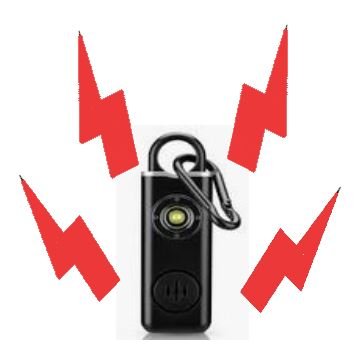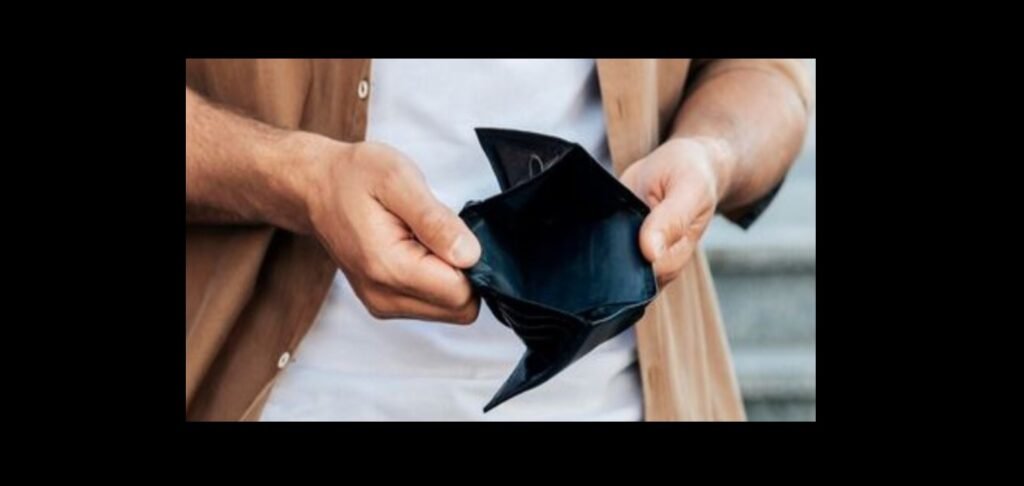Pickpocketing is a sneaky crime that can happen to anyone, anywhere, especially in crowded places like markets, public transport, and tourist spots. In this comprehensive guide, we’ll delve into how pickpockets operate, ways to spot them, and effective strategies to avoid falling victim to their tactics.
Understanding Pickpocketing
How Pickpockets Operate
Pickpockets are skilled at their craft and often employ various tactics to distract their victims and steal their belongings without them even realizing it. One common tactic is creating a diversion, where one pickpocket will create a commotion or engage the victim in a conversation, while another pickpocket swiftly steals their wallet or phone. Another tactic is bumping into the victim, either accidentally or intentionally, causing them to lose focus for a split second, during which the pickpocket seizes the opportunity to snatch their valuables. It’s important to be aware of these tactics and stay alert in crowded areas.
Spotting Pickpockets
Common Signs of a Pickpocket
- Unusual Close Proximity: Be cautious of anyone who gets unusually close to you, especially in crowded areas.
- Distracting Behavior: Be aware of sudden distractions around you, like someone dropping items or engaging in loud arguments.
- Unusual Movements: Watch for people who seem to be more interested in you than their surroundings, constantly shifting position to stay near you.
- Group Dynamics: Be cautious of groups where one person might distract while another attempts to steal.
Typical Locations for Pickpocketing
- Public Transportation: Buses, trains, and stations are prime spots due to the high volume of people.
- Tourist Attractions: Popular tourist spots are magnets for pickpockets targeting distracted visitors.
- Crowded Markets: Markets and fairs, where people are focused on shopping, provide ample opportunities for pickpockets.
- Events and Festivals: Large gatherings are perfect for blending into the crowd and going unnoticed.
Tips for protecting yourself while shopping
While shopping, it’s important to be mindful of your surroundings and take steps to protect yourself from pickpockets. Firstly, avoid carrying large sums of cash and instead opt for using credit or debit cards. Keep your wallet or purse close to your body and preferably in a zippered or buttoned compartment. To prevent it from becoming an easy target, avoid placing it in your back pocket. Additionally, be cautious of anyone who appears overly friendly or tries to engage you in conversation for no apparent reason. These are possible strategies employed by pickpockets to divert your attention. Finally, be mindful of your belongings when trying on clothes or browsing through racks. Keep your bag zipped and within your line of sight at all times.
Tips for protecting yourself while traveling
When traveling, especially in unfamiliar places, it’s important to take extra precautions to protect yourself from pickpockets. Firstly, make sure to research the area you will be visiting and familiarize yourself with any known pickpocket hotspots. Avoid displaying expensive jewelry or accessories that could attract unwanted attention. Keep your belongings secure by using a combination lock or a slash-proof bag. Additionally, be cautious of anyone offering unsolicited help or trying to distract you. It’s also wise to keep important documents such as your passport and travel documents in a secure location, such as a hotel safe, when not needed.
How to secure your belongings in crowded areas
In crowded areas such as shopping malls or busy tourist attractions, it’s crucial to take extra steps to secure your belongings. One effective method is to use a cross-body bag or backpack, as it’s harder for pickpockets to access without your knowledge. Place the bag in front of you and make sure it is tightly closed. Do not store valuable items in outer pockets or compartments that are easily reachable. Additionally, consider using a money belt or a hidden pouch under your clothing to store important items such as cash, identification, and credit cards. By keeping your belongings close to your body and out of sight, you significantly reduce the risk of becoming a target.
How to Avoid Pickpockets
Practical Tips to Protect Yourself
- Stay Vigilant: Always be aware of your surroundings and the people around you.
- Secure Your Belongings: Use bags that close securely, such as zippered purses or backpacks with hidden compartments.
- Distribute Your Valuables: Don’t keep all your valuables in one place. Spread them out across different pockets or bags.
- Use Anti-Theft Products: Consider investing in anti-theft bags, money belts, and clothing with concealed pockets.
- Stay Informed: Learn about common pickpocketing techniques and stay updated on areas where pickpocketing is prevalent.
In-Depth Explanation: How Pickpockets Distract You
Pickpockets rely heavily on distractions. Here’s a detailed look at some common distraction techniques:
Creating a Scene
Pickpockets often create a scene, such as a heated argument or someone pretending to faint. While everyone’s attention is diverted, the pickpocket slips into action.
Asking for Help
A common tactic is to ask for help, like directions or assistance with something. While you’re engaged, an accomplice may be targeting your belongings.
The Bump and Lift
In crowded areas, a pickpocket might bump into you to distract you from the sensation of your wallet being lifted.
The Drop
This involves dropping items, like coins or a bag, near you. While you’re being a Good Samaritan and helping pick up the items, the pickpocket is stealing from you.
A Comprehensive Guide to Anti-Pickpocketing Strategies
1. RFID Protection
RFID-blocking wallets or sleeves are designed to prevent thieves from remotely scanning and stealing information from RFID-enabled credit cards and passports. RFID (Radio Frequency Identification) technology-enabled devices such as credit cards, passports, and keycards.
These wallets or sleeves contain materials that block radio waves, thus preventing unauthorized access to your sensitive information. They are essential for protecting against electronic pickpocketing.
2. Concealed Storage
Money belts or hidden pouches are worn under clothing to keep valuables such as cash, cards, and passports out of sight and reach of pickpockets.
These concealed storage solutions provide a discreet way to carry essential items, reducing the risk of theft in crowded or tourist-heavy areas. They are typically made of lightweight and breathable materials for comfort during extended wear.
3. Anti-Theft Bags and Backpacks
Anti-theft bags and backpacks are equipped with features such as locking zippers, slash-resistant materials, and RFID-blocking pockets to keep belongings secure.
These bags offer multiple layers of protection against theft. Locking zippers prevent unauthorized access to compartments, slash-resistant materials deter slashing attempts, and RFID-blocking pockets safeguard against electronic theft of personal information.
4. Dummy Wallet Technique

The dummy wallet technique involves carrying a decoy wallet with expired cards and a small amount of cash in an easily accessible pocket to distract pickpockets.
By presenting the dummy wallet when approached by potential thieves, you can minimize the risk of losing your actual valuables. The decoy wallet should resemble a real wallet to deceive thieves effectively.
5. Securing Valuables with Safety Pins
Securing zippers and pockets with safety pins makes it more difficult for pickpockets to access them without your knowledge.
Safety pins act as a simple yet effective deterrent against pickpockets. By pinning zippers and pockets closed or attaching them to a fixed point on your clothing or bag, you create an additional barrier that thieves must overcome.
6. Personal Alarms

Personal alarms emit a loud sound when activated, alerting nearby individuals and deterring pickpockets.
These compact devices are typically carried on keychains or attached to clothing or bags for easy access. When activated, they produce a loud noise that draws attention to the situation, potentially causing the thief to flee and alerting others to the attempted theft.
7. Smartphone Apps
Smartphone apps offer features such as device tracking and remote data wiping to protect against theft and unauthorized access.
Anti-theft apps allow you to locate your device if it’s stolen, remotely lock or wipe its data to prevent unauthorized access, and even capture photos or videos of the thief. Some apps also offer additional security features such as alarm activation and SIM card detection.
8. Vigilance and Awareness
Staying vigilant and aware of your surroundings is one of the most effective strategies for preventing pickpocketing.
Pay attention to crowded or high-risk areas, keep your belongings close at hand, and be wary of any suspicious individuals or behaviors. Avoid displaying valuables openly and trust your instinct if something feels off. By staying alert and proactive, you can reduce the likelihood of falling victim to pickpockets.
Additional Safety Strategies
Traveling Safely
- Travel Light: Carry only what you need, and leave unnecessary valuables at home.
- Stay Alert in High-Risk Areas: Be extra cautious in known high-risk areas and follow local advice on safe practices.
- Buddy System: If possible, travel with someone else to help watch each other’s back.
Technological Aids
- Tracking Devices: Use tracking devices in your belongings for added security.
- Travel Apps: Utilize travel safety apps that provide real-time updates on safe routes and areas to avoid.
Conclusion
Pickpocketing can be a frustrating and distressing experience, but by staying informed and vigilant, you can significantly reduce your risk. Remember to always be aware of your surroundings, secure your belongings, and stay one step ahead of potential thieves.
Call to Action
If you’ve found these tips helpful, share this guide with friends and family to help them stay safe too. Subscribe to our email for more travel and safety information.
By following these guidelines, readers can effortlessly grasp the essential information and apply these safety tips in their daily lives.



